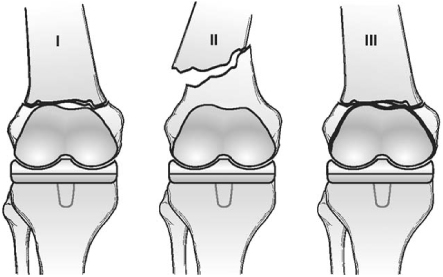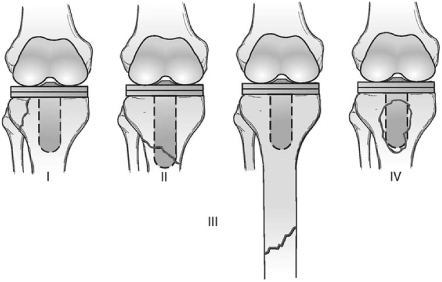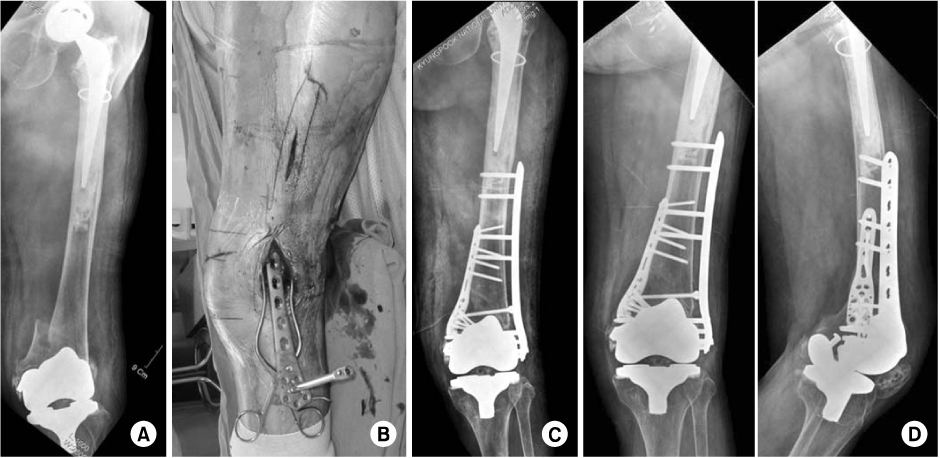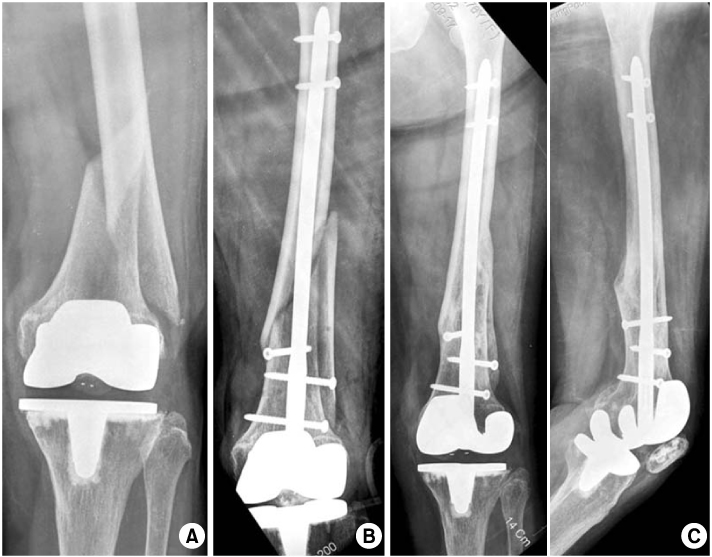J Korean Fract Soc.
2011 Apr;24(2):206-211. 10.12671/jkfs.2011.24.2.206.
Treatment of Peri-prosthetic Fracture about Total Knee Replacement
- Affiliations
-
- 1Department of Orthopaedic Surgery, Kyungpook National University Hospital, Daegu, Korea. cwoh@knu.ac.kr
- KMID: 2183866
- DOI: http://doi.org/10.12671/jkfs.2011.24.2.206
Abstract
- No abstract available.
MeSH Terms
Figure
Reference
-
1. Berry DJ. Epidemiology: hip and knee. Orthop Clin North Am. 1999. 30:183–190.2. Felix NA, Stuart MJ, Hanssen AD. Periprosthetic fractures of the tibia associated with total knee arthroplasty. Clin Orthop Relat Res. 1997. 345:113–124.
Article3. Lesh ML, Schneider DJ, Deol G, Davis B, Jacobs CR, Pellegrini VD Jr. The consequences of anterior femoral notching in total knee arthroplasty. A biomechanical study. J Bone Joint Surg Am. 2000. 82:1096–1101.
Article4. Lewis PL, Rorabeck CH, Angliss RD. Fractures of the femur, tibia, and patella after total knee arthroplasty: Decision making and principles of management. Instr Course Lect. 1998. 47:449–460.5. Oh CW, Oh JK, Kyung HS, et al. Double plating of unstable proximal tibial fractures using minimally invasive percutaneous osteosynthesis technique. Acta Orthop. 2006. 77:524–530.
Article6. Peters CL, Hennessey R, Barden RM, Galante JO, Rosenberg AG. Revision total knee arthroplasty with a cemented posterior-stabilized or constrained condylar prosthesis: a minimum 3-year and average 5-year follow-up study. J Arthroplasty. 1997. 12:896–903.
Article7. Petersen MM, Lauritzen JB, Pedersen JG, Lund B. Decreased bone density of the distal femur after uncemented knee arthroplasty. A 1-year follow-up of 29 knees. Acta Orthop Scand. 1996. 67:339–344.
Article8. Ricci WM, Borrelli J Jr. Operative management of periprosthetic femur fractures in the elderly using biological fracture reduction and fixation techniques. Injury. 2007. 38:Suppl 3. S53–S58.
Article9. Schütz M, Müller M, Krettek C, et al. Minimally invasive fracture stabilization of distal femoral fractures with the LISS: a prospective multicenter study. Results of a clinical study with special emphasis on difficult cases. Injury. 2001. 32:3 Suppl. SC48–SC54.
Article10. Sharkey PF, Hozack WJ, Callaghan JJ, et al. Acetabular fracture associated with cementless acetabular component insertion: a report of 13 cases. J Arthroplasty. 1999. 14:426–431.
Article11. Su ET, DeWal H, Di Cesare PE. Periprosthetic femoral fractures above total knee replacements. J Am Acad Orthop Surg. 2004. 12:12–20.
Article12. Thompson NW, McAlinden MG, Breslin E, Crone MD, Kernohan WG, Beverland DE. Periprosthetic tibial fractures after cementless low contact stress total knee arthroplasty. J Arthroplasty. 2001. 16:984–990.
Article13. Wang CJ, Wang JW, Weng LH, Hsu CC, Huang CC, Chen HS. The effect of alendronate on bone mineral density in the distal part of the femur and proximal part of the tibia after total knee arthroplasty. J Bone Joint Surg Am. 2003. 85:2121–2126.
Article
- Full Text Links
- Actions
-
Cited
- CITED
-
- Close
- Share
- Similar articles
-
- Three Concurrent Periprosthetic Joint Infections: A Case Report and Literature Review
- Total Knee Replacement Report of Three Cases
- Geometric Total Knee Arthroplasty: A Case Report
- Functional Review of the Hemiarthroplasty Vs, Total Joint Replacement in the Femur Neck Fracture
- Management of peri-implantitis associated with tear-like implant fracture: case reports







